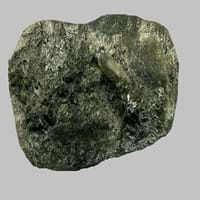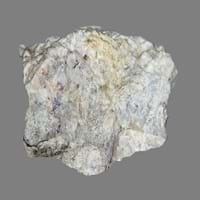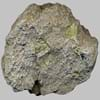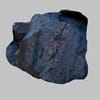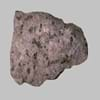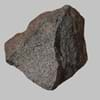Definition
Kenyte is a variety of porphyritic phonolite or trachyte rock with rhomb shaped phenocrysts of anorthoclase with variable olivine and augite in a glassy matrix
Skarns are formed during regional or contact metamorphism and from a variety of metasomatic processes involving fluids of magmatic, metamorphic, and/or marine origin
Origin
Mount Kenya
USA, Australia
Discoverer
J. W. Gregory
Tornebohm
Etymology
From the mountain ranges- Mount Kenya and is named by J. W. Gregory in 1900
From an old Swedish mining term originally used to describe a type of silicate gangue or waste rock.
Class
Igneous Rocks
Metamorphic Rocks
Sub-Class
Durable Rock, Medium Hardness Rock
Durable Rock, Hard Rock
Group
Not Applicable
Not Applicable
Other Categories
Fine Grained Rock, Opaque Rock
Fine Grained Rock, Opaque Rock
Texture
Glassy, Granular
Earthy, Mud-rich, Rough
Color
Brown, Buff, Cream, Green, Grey, Pink, White
Black, Brown, Colourless, Green, Grey, White
Durability
Durable
Durable
Scratch Resistant
Yes
Yes
Appearance
Banded and Foilated
Dull
Interior Uses
Decorative Aggregates, Entryways, Homes, Interior Decoration, Kitchens
Decorative Aggregates, Entryways, Interior Decoration
Exterior Uses
As Building Stone, Garden Decoration, Paving Stone
As Building Stone, As Facing Stone, Garden Decoration, Paving Stone
Other Architectural Uses
Curbing
Curbing
Construction Industry
As Dimension Stone, Cement Manufacture, Construction Aggregate, for Road Aggregate, Landscaping, Making natural cement, Manufacture of Magnesium and Dolomite Refractories, Production of Glass and Ceramics
As a Flux in the Production of Steel and Pig Iron, As a Sintering Agent in Steel Industry to process Iron Ore, As Dimension Stone, Gold and Silver production, Manufacture of Magnesium and Dolomite Refractories
Medical Industry
Not Yet Used
Not Applicable
Antiquity Uses
Artifacts, Monuments, Sculpture
Artifacts, Monuments, Sculpture
Commercial Uses
Cemetery Markers, Creating Artwork
Creating Artwork, Gemstone, Jewelry, Metallurgical Flux, Source of Magnesia (MgO)
Types
Not Available
Endoskarns
Features
Application of acids on the surface causes cloudy frosting, Available in Lots of Colors and Patterns, Dissolves in hydrochloric acid, Is one of the oldest rock
Host Rock for Lead, Zinc and Copper Deposits
Archaeological Significance
Famous Monuments
Data Not Available
Data Not Available
Famous Sculptures
Data Not Available
Data Not Available
Pictographs
Used
Not Used
Petroglyphs
Used
Not Used
Formation
Kenyte is a fine-grained, hard rock which is a type of metasomatite, essentially altered basalt. It forms with or without crystallization, either below the surface as intrusive rocks or on the surface as extrusive rocks.
Due to change in environmental conditions, rocks are heated and pressurized deep inside the Earth's surface. Skarn is formed from the extreme heat caused by magma or by the intense collisions and friction of tectonic plates.
Mineral Content
Albite, Amphibole, Biotite, Cancrinite, Feldspar, Hornblende, Plagioclase, Pyroxene, Sodalite
Calcite, Enstatite, Epidote, Garnet, Magnetite, Pyroxene, Titanite
Compound Content
Aluminium Oxide, CaO, Iron(III) Oxide, FeO, Potassium Oxide, MgO, MnO, Sodium Oxide, Phosphorus Pentoxide, Silicon Dioxide, Titanium Dioxide
Au, CaO, Carbon Dioxide, Cu, Fe, MgO
Types of Metamorphism
Burial Metamorphism, Cataclastic Metamorphism, Impact Metamorphism
Burial Metamorphism, Cataclastic Metamorphism, Contact Metamorphism, Hydrothermal Metamorphism, Impact Metamorphism, Regional Metamorphism
Types of Weathering
Biological Weathering
Not Applicable
Types of Erosion
Chemical Erosion, Coastal Erosion
Not Applicable
Grain Size
Fine Grained
Fine Grained
Fracture
Conchoidal to Uneven
Irregular
Streak
White, Greenish White or Grey
Light to dark brown
Porosity
Highly Porous
Less Porous
Luster
Greasy to Dull
Waxy and Dull
Compressive Strength
Not Available
Toughness
Not Available
2.4
Specific Gravity
2.6
2.86
Transparency
Translucent to Opaque
Opaque
Density
2.6 g/cm3
2.8-2.9 g/cm3
Specific Heat Capacity
Not Available
Resistance
Heat Resistant, Impact Resistant, Wear Resistant
Heat Resistant
Deposits in Eastern Continents
Asia
Indonesia, Iran, Russia, Saudi Arabia, Sri Lanka, Taiwan, Thailand, Turkey, Turkmenistan, Vietnam
China, India, Russia, Saudi Arabia, South Korea, Sri Lanka
Africa
Angola, Egypt, Madagascar, Namibia, Nigeria, South Africa
South Africa, Western Africa
Europe
Andorra, Finland, France, Germany, Great Britain, Italy, Norway, Portugal, Spain, Sweden
United Kingdom
Others
Greenland
Not Yet Found
Deposits in Western Continents
North America
Canada, USA
Canada
South America
Brazil, Chile, Colombia, Uruguay, Venezuela
Brazil, Colombia, Paraguay
Deposits in Oceania Continent
Australia
New Zealand, Queensland, South Australia, Tasmania, Western Australia
Central Australia, Western Australia
All about Kenyte and Skarn Properties
Know all about Kenyte and Skarn properties here. All properties of rocks are important as they define the type of rock and its application. Kenyte belongs to Igneous Rocks while Skarn belongs to Metamorphic Rocks.Texture of Kenyte is Glassy, Granular whereas that of Skarn is Earthy, Mud-rich, Rough. Kenyte appears Banded and Foilated and Skarn appears Dull. The luster of Kenyte is greasy to dull while that of Skarn is waxy and dull. Kenyte is available in brown, buff, cream, green, grey, pink, white colors whereas Skarn is available in black, brown, colourless, green, grey, white colors. The commercial uses of Kenyte are cemetery markers, creating artwork and that of Skarn are creating artwork, gemstone, jewelry, metallurgical flux, source of magnesia (mgo).
